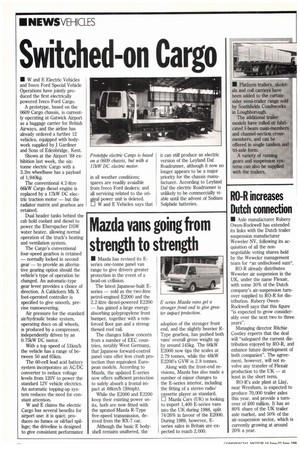Mazda vans going from strength to strength
Page 12

If you've noticed an error in this article please click here to report it so we can fix it.
• Mazda has revised its Eseries one-tonne panel van range to give drivers greater protection in the event of a head-on collision.
The latest Japanese-built Eseries — sold as the two-litre petrol-engined E2000 and the 2.2-litre diesel-powered E2200 — has gained a large energyabsorbing polypropylene front bumper, together with a reinforced floor pan and a strengthened roof rail.
The changes follow concern from a number of EEC countries, notably West Germany, that Japanese forward-control panel vans offer less crash protection than equivalent European models. According to Mazda, the updated E-series now offers sufficient protection to safely absorb a frontal impact at 48Iun/h (30mph).
While the E2000 and E2200 keep their existing power units, both are now fitted with the uprated Mazda R-Type five-speed transmission, derived from the RX-7 car.
Although the basic E bodyshell remains unaltered, the adoption of the stronger front end, and the slightly heavier RType gearbox, has pushed both vans' overall gross weight up by around 145kg. The 66kW E2000 now tips the scales at 2.79 tonnes, while the 48kW E2200's GVW is 2.8 tonnes.
Along with the front-end revisions, Mazda has also made a number of minor changes to the E-series interior, including the fitting of a stereo radio/ cassette player as standard. 0 Mazda Cars (UK) is looking to import 1,400 E-series vans into the UK during 1988, split 74/26% in favour of the E2000. During 1989, however, Eseries sales in Britain are expected to reach 2,000.
























































































































































